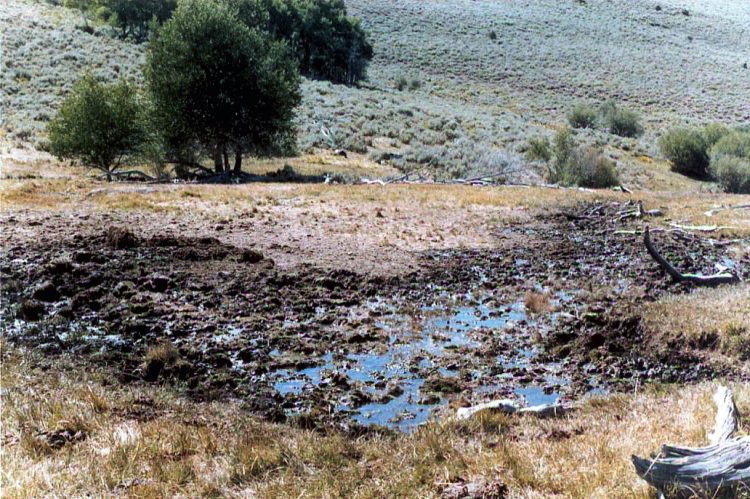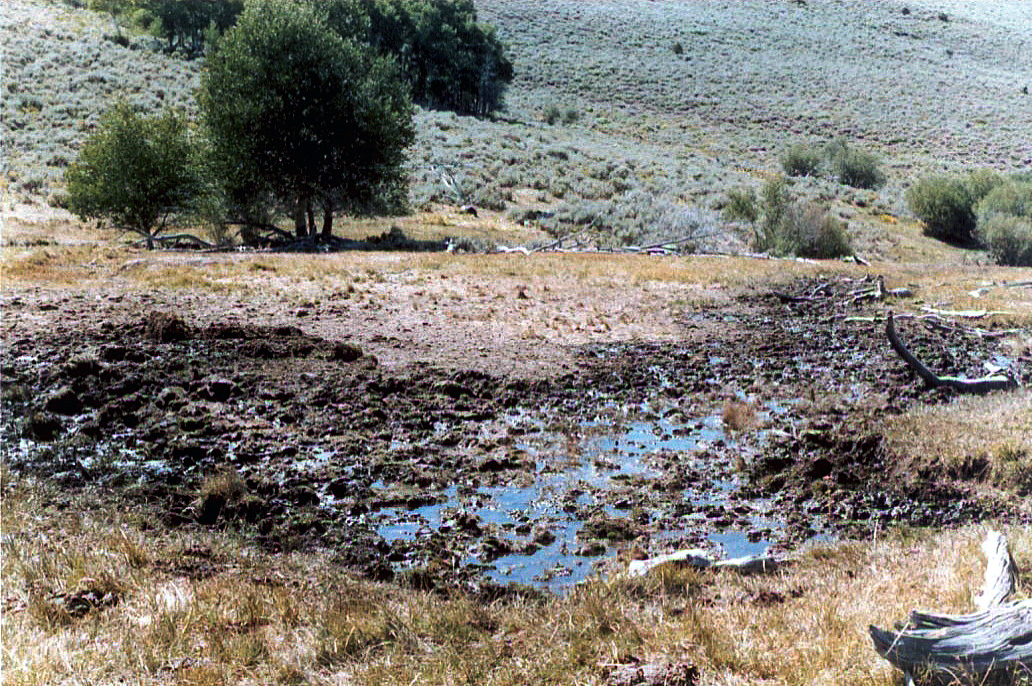
PLEASE S/S https://petitions.whitehouse.gov/petition/livestock-grazing-public-lands-rectify-heavy-impact
22 November 2017
President Donald Trump
The White House
1600 Pennsylvania Avenue NW
Washington, DC 20500
Secretary Ryan Zinke
Department of the Interior
1849 C Street, N.W.Washington DC 20240
Dear President Trump and Secretary of the Interior Zinke:
Pursuant to 5 U.S.C. § 555(e), we, the American people and the undersigned organizations representing
them, petition you to minimize the impact of livestock grazing on federal public lands, including but not
limited to national forests and Bureau of Land Management lands, to address ecological problems
caused by commercial livestock grazing. Ecological problems are occurring in instances where:
● livestock grazing displaces wildlife, reduces wildlife populations through competition for forage,
or degrades wildlife habitats;
● degradation is occurring to the land (for example, erosion or soil compaction);
● transmission of pathogens is occurring from livestock to wildlife populations;
● degradation is occurring to plant communities;
● native wildlife are killed to advance the interests of public lands ranchers;
● livestock are damaging to sensitive wetlands or riparian areas; or
● damage is occurring to streams and aquatic habitats for sensitive fishes and amphibians.
● Ruminant grazing contributes to the nitrogen load in streams as well as nitrous oxide gasses also
a greenhouse gas.
With this petition, we seek reductions in the numbers of commercial livestock on public lands that are
sufficient to prevent further damage to native ecosystems, and allow the recovery of currently degraded
lands to a natural state. On some lands which evolved in the absence of large grazers, such as the
low-elevation shrubsteppes and deserts of the Great Basin, where soil productivity is dependent on
fragile biological soil crusts, the appropriate maximum stocking rate for commercial livestock may be
zero.
Poorly managed livestock can cause dustbowl effects through overgrazing. Removal of native grasses
and trampling and compaction of soils paves the way for invasive weeds such as cheatgrass, which burn
with unnatural frequency and convert native desert and shrubsteppe vegetation to cheatgrass
monocultures of no habitat value to wildlife. This increase in range fires and the cheatgrass invasion that
follows in their wake cannot be successfully stemmed or reversed through the construction of
fuelbreaks or an increase in direct attack. In an increasingly flammable West, firefighters have a poor
record of extinguishing all ignitions. Furthermore, during windy, drought conditions when large fires are
most likely to occur, fires commonly spot a mile or more ahead of the flame front, even leaping
interstate highways and major rivers. It is necessary to stop ignoring the root cause of this cycle of
cheatgrass and fire – the domestic livestock that spread cheatgrass seeds and destroy the native
perennial bunchgrasses and biological soil crusts that are nature’s best defense against cheatgrass
invasion.
Commercial livestock grazing on public lands is a taxpayer-subsidized program that costs the American
people not only the loss of the quality of our public lands and waters, but also loss of wildlife.
The subsidies for livestock grazing outweigh the fees collected for public lands grazing by approx $1.4
billion annually. (based on Bureau of Land Management 2014 income from Grazing program and 2013
Subsidies) So there is no financial advantage for the nation to underwrite subsidies for this program, but
setting these important limitations would have a positive impact on our budget, because it would
reduce many of the subsidies to be paid.
We also pay for an agency whose only mission is to deal with predators of livestock, which creates
population issues of cervids and other animals. So limitations would also remove the need for Wildlife
Services, and saving a further $100 million annually.
This would also remove the migratory problems and injuries we see with fencing. Reopening migratory
routes will help keep some species off the ESA list. Injuries to special status species like the greater sage
grouse would be greatly reduced by removing fences and limiting grazing in any areas of critical
concern.
Cattle grazing on public lands in the western states is putting a domestic species adapted to moist,
northern European ecosystems into an arid environment where they are ill-suited to survive. As a
result, cattle concentrate along streamsides, springs, wetlands, and lakeshores that under natural
circumstances are oases of biodiversity with rich and productive vegetation communities, but under
heavy grazing and trampling become denuded and degraded. This damage results in the loss or
reduction of the large majority of native wildlife that depend on rich riparian habitats for some or all of
their life cycles; notable among such species are rare jumping mice, sage-grouse, songbirds, and beavers
which are the ecological keystone of western stream systems. We also see a serious decline in water
sources or riparian areas due to the lingering nature of livestock near water sources in this type of
climate, and the habit of defecating in those waters.
Livestock grazing also has devastating impacts on stream and river systems, and the fishes and other
aquatic life that they support. Bank trampling by cattle breaks down overhanging banks that under
natural conditions provide shade and cover for fishes, and convert stream profiles from deep and
narrow to wide and shallow. This, together with the removal of overhanging natural vegetation and the
resulting loss of shade raises water temperatures, often to levels outside the thermal tolerance zones of
native trout and salmon. Cattle concentrating along, and wallowing in, streams and rivers results in
radical increases in erosion and siltation, turning crystalline waters into turbid flows, and smothering
trout and salmon spawning gravels with silt.
Domestic sheep cause additional problems by transmitting pathogens which induce deadly pneumonia
in wild bighorn sheep. Pneumonia outbreaks commonly result in losses of 30 to 70% of an affected
bighorn herd, with total mortality and local extirpation occurring in some instances. Following a
pneumonia outbreak, lambs born to surviving ewes typically die shortly after weaning, resulting in
depressed recruitment rates which may inhibit herd growth for years to follow. Despite decades of
translocation and restoration efforts to reverse the effects of a precipitous crash in which an estimated
98% of all bighorn sheep were lost, populations Westwide remain at less than 5% of historic numbers.
Disease events resulting from contact with domestic sheep are the primary limiting factor in the
recovery of this iconic native species.
In summary, by limiting the livestock in areas of conflict or degradation you can: save money, save
wildlife, and save the value of our lands and water.
Respectfully yours,
Theresa J Barbour
UVOTE Coalition
PO Box 115
Drain OR 97435
Signing on behalf of:
Erik Molvar
Executive Director
Western Watersheds Project
Dr. Lester Friedlander, DVM
President
Citizens Against Equine Slaughter
Jeanne Brummet
Founder
Unified Voices of the Eagle (UVOTE) Coalition
Public Lands, Truth Campaign, Director
Kathleen Hayden
Coyote Canyon Caballos d’Anza Inc
Michele Anderson
Heber Wild Horses Freedom Preservation Alliance
Kirk Robinson, Ph.D.
Executive Director
Western Wildlife Conservancy
Shelley Silbert
Executive Director
Great Old Broads for Wilderness
Val Cecama-Hogsett
Executive Director
National Wild Horse & Burro Administration
Patricia Herman
Roger Dobson
Protect The Wolves™
A Native American Group
Nancy Hilding
President
Prairie Hills Audubon Society
Christina Marie Anderson
Paws Across America Advocacy
Sandi Claypool
Monero Mustangs
Patience O’Dowd
Wild Horse Observers Association
Jen Howe
Wild Horses of Southern Utah
Mr. Ara Marderosian
Sequoia ForestKeeper®
Mike Garrity
Executive Director
Alliance for the Wild Rockies
Camilla H. Fox
Founder & Executive Director
Project Coyote
Christine Blackwell
Hang a Halter
Manda Kailmian
The Cana Foundation
Amy Hanchey
Pegasus Equine Guardian Association
Cc: Members of Congress

Comments
please consider the importance of maintaining ecosystems and all they contain
Please pay heed to the comments in this letter
Public lands belong to all US citizens and wolves have every right to be on public lands. What gives grazing more important than a life of a wolf. The real issues have become clouded by pure hate. As god looks down on us he is probably wondering how something he created be so full of hate. Protect wolves
Livestock grazing on public lands for a pittance is a practice that needs to end. It represents backward thinking and ignores the impact that this has on the environment and wildlife.
The above signed have my full support and appreciation for their efforts to protect our public lands and the native species that belong there.
I am appalled at the continuation of the destructive riders that are being signed out into law that show. Favour to ranchers to be allowed to overgraze freely in public land and wolf territory and wild life territory destroying land and its wild life and causing streams to be poisoned and grass land to be ruined and soil erosion, depriving natural herbivores of much needed sustenance causing elk and other herbivores to be malnourished and sick! Setting wolves up to be killed wuch in turn breaks down the chain of life and causes death and suffering and decline of both wild life plant and destruction of land and wild birds ect ect.. All caused by mc Irvin. This awful corrupt man is responsible for much devastation and suffering in his greed and corruption and he should have Hus grazing rights evolked.